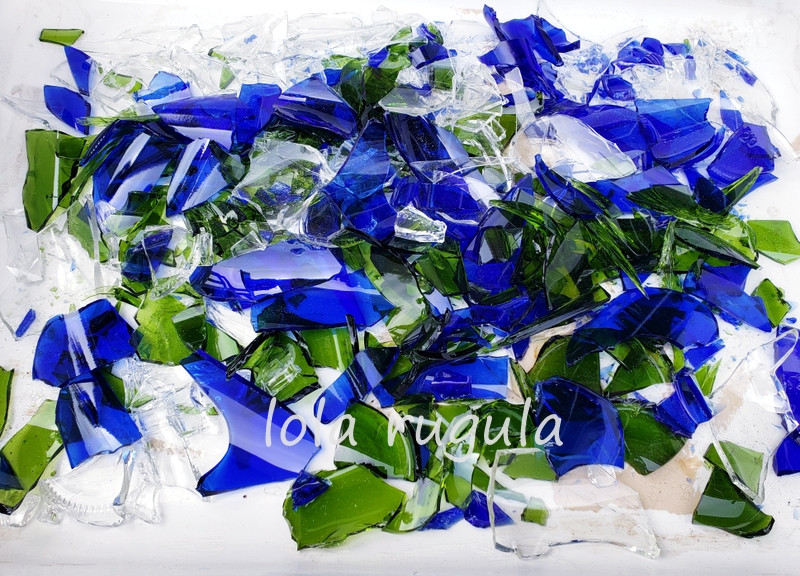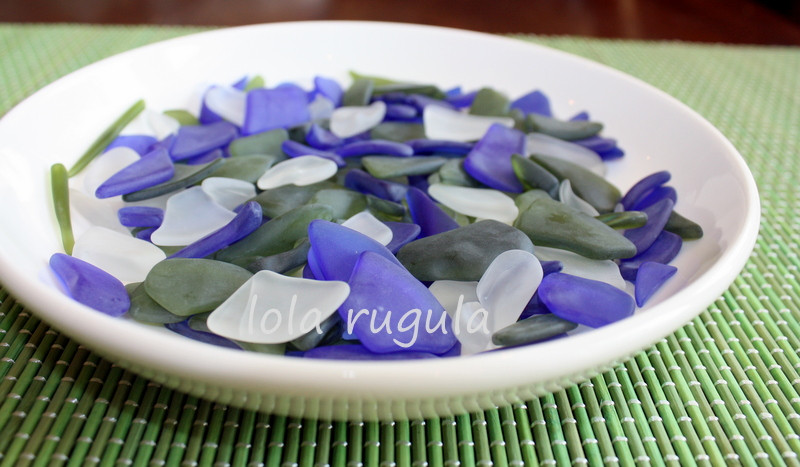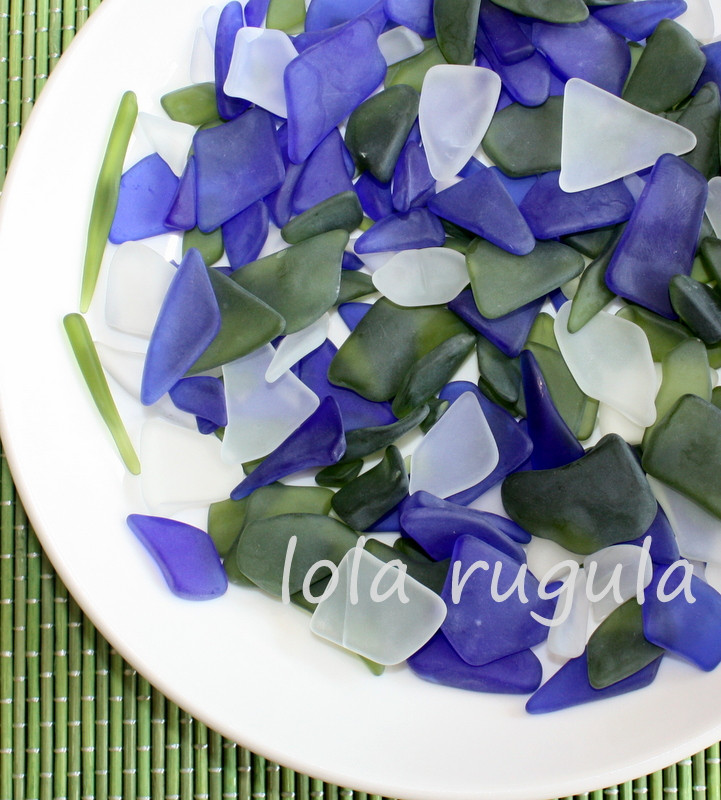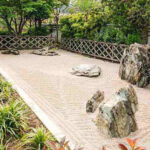Can you create stunning sea glass using a rock tumbler? Absolutely you can, and rockscapes.net is here to show you how! Forget the beachcombing – transform ordinary glass into ocean-inspired treasures with a simple process. This guide will provide you with comprehensive information and expert tips for crafting beautiful sea glass at home.
1. Understanding the Allure of Sea Glass and The Feasibility
What Exactly Is Sea Glass?
Sea glass, also known as beach glass or mermaid’s tears, is glass that has been discarded into bodies of water, tumbled by the waves and sand for years, resulting in a frosted, smooth surface. The allure of sea glass lies in its unique texture, soft edges, and the stories it whispers of its past life. It’s beautiful as is, or can be used to create jewelry or decorate your garden.
Can You Mimic Nature’s Process?
Yes, you absolutely can mimic the natural sea glass creation process using a rock tumbler. While authentic sea glass takes years, even decades, to form in the ocean, a rock tumbler can achieve a similar effect in a matter of weeks. According to research from Arizona State University’s School of Earth and Space Exploration, in July 2025, using a tumbler is a viable method.
2. Essential Equipment and Materials to Get Started
What Do You Need to Tumble Glass Successfully?
To embark on your sea glass creation journey, you’ll need a few key items:
- A Rock Tumbler: This is the heart of the process. Choose a tumbler size that suits your needs. A 3-pound tumbler is a great starting point for smaller batches.
- Glass: Recycled glass bottles are an excellent and eco-friendly choice. Wine bottles, beer bottles, or even broken window panes can be used. Be sure to remove any labels and thoroughly clean the glass.
- Ceramic Tumbling Media: These small ceramic pellets act as cushions, preventing the glass from chipping and breaking excessively during the tumbling process.
- Tumbling Grit: This abrasive material is essential for rounding off sharp edges and creating the frosted texture. You’ll need a coarse grit (Step 1), a medium grit (Step 2), and a fine grit (Step 3).
- Safety Gear: Always wear safety glasses and gloves when handling broken glass.
Where Can You Source Your Materials?
- Rock Tumblers: These can be purchased from hobby stores, online retailers like Amazon, or rock and mineral suppliers.
- Glass: Recycle your own used glass bottles, or collect discarded glass from friends and neighbors.
- Ceramic Tumbling Media and Tumbling Grit: These are readily available at hobby stores, lapidary supply stores, and online marketplaces.
3. Step-by-Step Guide: Tumbling Glass to Create Sea Glass
How Do You Prepare the Glass?
Begin by thoroughly cleaning the glass you plan to tumble. Remove any labels, caps, or other attachments. Next, carefully break the glass into smaller pieces. A hammer and a sturdy surface can be used, but always wear safety glasses and gloves to protect yourself from flying shards. Aim for pieces that are roughly 1 to 2 inches in size.
What Is the Tumbling Process Like?
The tumbling process involves multiple stages, each using a different grade of grit to gradually smooth and frost the glass:
Stage 1: Coarse Grit (7-10 Days)
Place the broken glass pieces into the rock tumbler, filling it about two-thirds full. Add ceramic tumbling media to fill the remaining space. Add water until it almost covers the glass and media. Add the recommended amount of coarse grit (follow the instructions on the grit packaging). Seal the tumbler and let it run for 7-10 days, checking the progress every day.
Stage 2: Medium Grit (7-10 Days)
After the coarse grit stage, rinse the glass, media, and tumbler thoroughly. Place the glass and media back into the tumbler, add fresh water, and add the recommended amount of medium grit. Tumble for another 7-10 days, checking the progress regularly.
Stage 3: Fine Grit (7-10 Days)
Repeat the rinsing process and place the glass and media back into the tumbler. Add fresh water and the recommended amount of fine grit. Tumble for a final 7-10 days, checking the progress.
Stage 4: Polish (Optional, 3-5 Days)
For a smoother, more polished finish, you can add a final polishing stage using a rock polishing compound like aluminum oxide. Tumble for 3-5 days.
How Do You Know When the Sea Glass Is Ready?
The sea glass is ready when the edges are smooth and rounded, and the surface has a frosted, matte appearance. The amount of time needed in each stage can vary depending on the type of glass, the size of the tumbler, and the grit used.
4. Tips and Tricks for Achieving the Perfect Sea Glass Finish
What Are Some Common Pitfalls to Avoid?
- Overfilling the Tumbler: Overfilling can prevent the glass from tumbling properly, resulting in uneven frosting.
- Using Too Much Grit: Too much grit can scratch the glass instead of smoothing it.
- Not Changing the Grit Regularly: Using the same grit for too long will reduce its effectiveness.
- Using Soft Glass: Softer glass, like that found in some decorative bottles, may break down too quickly in the tumbler.
How Can You Enhance the Sea Glass Effect?
- Experiment with Different Types of Glass: Different types of glass will produce varying textures and colors of sea glass.
- Add Sea Salt to the Tumbler: Some people believe that adding a small amount of sea salt to the tumbler can enhance the frosting effect.
- Use a Vibratory Tumbler: Vibratory tumblers can produce sea glass faster than rotary tumblers.
- Consider Adding a Final Polish Stage: This will give your sea glass a smoother, more refined finish.
5. Safety Precautions When Working with Glass and Tumblers
What Are the Most Important Safety Rules?
- Always wear safety glasses and gloves when handling broken glass or working with the tumbler.
- Work in a well-ventilated area to avoid inhaling glass dust.
- Keep the tumbler away from children and pets.
- Unplug the tumbler before cleaning or performing maintenance.
- Inspect the tumbler regularly for any signs of wear or damage.
How to Handle Broken Glass Safely?
- Use a broom and dustpan to carefully sweep up broken glass.
- Never pick up broken glass with your bare hands.
- Dispose of broken glass properly in a puncture-proof container.
6. Creative Projects and Uses for Your Homemade Sea Glass
What Can You Do With Your Sea Glass?
- Jewelry Making: Sea glass makes beautiful pendants, earrings, and bracelets.
- Home Decor: Use sea glass to create mosaics, picture frames, or decorative accents for your home.
- Garden Art: Incorporate sea glass into your garden decor, such as stepping stones or wind chimes.
- Gifts: Sea glass creations make unique and thoughtful gifts for friends and family.
Where Can You Find Inspiration for Your Projects?
- Pinterest: A treasure trove of sea glass craft ideas.
- Etsy: Browse handcrafted sea glass items for inspiration.
- Craft Blogs and Websites: Many online resources offer tutorials and ideas for working with sea glass.
- Rockscapes.net: Discover unique ways to incorporate your sea glass into stunning landscape designs.
7. The Science Behind the Transformation: How Tumbling Creates the Sea Glass Effect
What Causes the Frosted Texture?
The frosted texture of sea glass is created by the constant abrasion of the glass against the tumbling grit and ceramic media. The coarse grit initially rounds off the sharp edges, while the finer grits gradually create the matte, frosted surface.
How Does the Shape Change?
As the glass tumbles, the sharp edges and corners are worn down, resulting in a smoother, more rounded shape. The tumbling action also helps to remove any imperfections or irregularities on the surface of the glass.
8. Exploring Different Types of Glass and Their Unique Results
Which Types of Glass Work Best?
- Wine Bottles: Offer a variety of colors, including green, brown, and clear.
- Beer Bottles: Typically come in brown or green hues.
- Clear Glass: Can be tinted with dye or paint to create custom colors.
- Colored Glass: Produces vibrant and unique sea glass pieces.
How Do Colors Affect the Final Product?
The color of the glass will influence the final appearance of the sea glass. Darker colors tend to retain their vibrancy, while lighter colors may become more muted during the tumbling process.
9. Maintaining Your Rock Tumbler for Long-Lasting Performance
How Do You Clean Your Tumbler?
- After each stage, thoroughly rinse the tumbler barrel and lid with water.
- Use a mild detergent to remove any stubborn grit or residue.
- Dry the tumbler thoroughly before storing it.
How Often Should You Replace the Tumbling Media?
The ceramic tumbling media will gradually wear down over time. Replace the media when it becomes significantly smaller or starts to crumble.
10. Troubleshooting Common Issues in Sea Glass Tumbling
What If the Glass Is Not Frosting Properly?
- Make sure you are using the correct grit sequence.
- Ensure that the tumbler is not overfilled.
- Check that the grit is not contaminated with other materials.
- Allow the glass to tumble for a longer period of time.
What If the Glass Is Breaking Too Much?
- Use more ceramic tumbling media to cushion the glass.
- Reduce the amount of grit used.
- Use a lower tumbler speed.
- Avoid using very thin or fragile glass.
11. Ethical Considerations: Responsible Glass Sourcing and Disposal
How Can You Source Glass Responsibly?
- Recycle your own used glass bottles.
- Collect discarded glass from friends and neighbors.
- Avoid collecting glass from protected natural areas.
How Should You Dispose of Unusable Glass?
- Dispose of broken glass properly in a puncture-proof container.
- Recycle any glass that is still in good condition.
- Avoid dumping glass in landfills or natural areas.
12. Advanced Techniques: Adding Texture and Color to Your Sea Glass
How Can You Create Unique Textures?
- Add different types of media to the tumbler, such as small pebbles or shells.
- Experiment with different tumbling speeds.
- Use a textured tumbler barrel.
How Can You Add Custom Colors?
- Tint clear glass with dye or paint before tumbling.
- Use colored glass fragments to create a mosaic effect.
- Apply a sealant with added color after tumbling.
13. Sea Glass vs. Beach Glass: Understanding the Nuances
What’s the Difference?
While often used interchangeably, sea glass technically refers to glass found in saltwater environments (oceans, seas), while beach glass can be found in freshwater environments (lakes, rivers). The tumbling process is essentially the same, but the water composition can subtly affect the final appearance.
Does it Matter Where the Glass Comes From?
For tumbling purposes, the source of the glass doesn’t significantly impact the process. However, true sea glass enthusiasts value the history and journey of glass that has spent years being shaped by the ocean.
14. Documenting Your Sea Glass Journey: Sharing Your Creations
Why Share Your Experiences?
Sharing your sea glass creations and experiences can inspire others, provide valuable tips and insights, and connect you with a community of like-minded individuals.
How Can You Share Your Work?
- Social Media: Platforms like Instagram and Pinterest are perfect for showcasing your sea glass projects.
- Online Forums and Communities: Engage with other sea glass enthusiasts and share your knowledge.
- Craft Fairs and Markets: Sell your sea glass creations and connect with potential customers.
- Rockscapes.net: Share your landscape designs incorporating your homemade sea glass and inspire others.
15. The Future of Sea Glass: Trends and Innovations
What’s New in the World of Sea Glass?
- Sustainable Sea Glass Art: Artists are increasingly focusing on using recycled glass and eco-friendly techniques to create sea glass art.
- Innovative Tumbling Techniques: Experimentation with new tumbling media and processes is leading to unique and exciting results.
- Sea Glass Jewelry Design: Contemporary designers are pushing the boundaries of sea glass jewelry, creating stunning and original pieces.
How Can You Stay Up-To-Date?
- Follow sea glass artists and designers on social media.
- Subscribe to craft blogs and newsletters.
- Attend craft fairs and exhibitions.
- Visit Rockscapes.net for the latest trends in landscape design and material usage.
16. Sea Glass as a Symbol: Connecting with Nature and History
What Does Sea Glass Represent?
Sea glass embodies the beauty of transformation, resilience, and the enduring power of nature. It’s a reminder that even broken and discarded objects can be transformed into something beautiful and valuable.
How Can You Incorporate This Symbolism?
- Use sea glass in projects that promote environmental awareness.
- Share the story of sea glass with others.
- Connect with the history and heritage of coastal communities.
17. Frequently Asked Questions (FAQs) About Making Sea Glass in a Rock Tumbler
Can I use any type of glass in a rock tumbler to make sea glass?
Not all glass is created equal; avoid using delicate or very thin glass, as it is more prone to shattering. Aim to use thicker glass from bottles to ensure a more robust final product.
How long does it take to make sea glass in a rock tumbler?
Creating sea glass using a rock tumbler involves several stages and can take approximately 3-4 weeks, depending on the desired level of frosting and smoothness. Remember, patience is key.
What grit should I use for making sea glass in a rock tumbler?
To achieve the perfect sea glass finish, start with a coarse grit to shape the glass, then move to a medium grit to smooth the edges, and finish with a fine grit for the frosted texture.
Do I need to use ceramic tumbling media when making sea glass in a rock tumbler?
Absolutely, ceramic tumbling media is vital in the rock tumbling process. It cushions the glass pieces, preventing excessive breakage and ensuring a more even frosting.
Can I add sea salt to the rock tumbler when making sea glass?
Some DIY enthusiasts recommend adding sea salt to the rock tumbler to enhance the frosting effect and mimic the natural ocean environment, but this is optional.
How do I clean the sea glass after tumbling?
After each tumbling stage, thoroughly rinse the sea glass with water to remove any residual grit or debris. A soft brush can be used for more stubborn particles.
Is it safe to make sea glass in a rock tumbler indoors?
Yes, but ensure the area is well-ventilated to prevent inhalation of glass particles. It’s also wise to protect your workspace to avoid any mess.
Can I make sea glass in a vibratory tumbler?
Yes, a vibratory tumbler can be used to create sea glass, often at a faster rate than a rotary tumbler. Keep a close eye on the glass, as the process can be more aggressive.
How do I maintain my rock tumbler when making sea glass?
Regular maintenance ensures the longevity of your rock tumbler. Clean the barrel and inspect the belt and motor periodically. Follow the manufacturer’s instructions for specific maintenance tasks.
What are some creative projects I can do with my homemade sea glass?
The possibilities are endless; use your sea glass to make jewelry, mosaics, home decor items, or even garden art. Let your creativity shine.
Conclusion: Embrace the Art of Homemade Sea Glass
Creating sea glass in a rock tumbler is a rewarding and creative process that allows you to transform ordinary glass into unique and beautiful treasures. By following the steps and tips outlined in this guide, you can achieve stunning results and add a touch of coastal charm to your home and garden.
Ready to start your sea glass adventure? Visit rockscapes.net for inspiration, expert advice, and the resources you need to create breathtaking landscape designs incorporating your homemade sea glass.
Address: 1151 S Forest Ave, Tempe, AZ 85281, United States
Phone: +1 (480) 965-9011
Website: rockscapes.net
 Wine bottle shards for sea glass
Wine bottle shards for sea glass
 Homemade sea glass from wine bottles
Homemade sea glass from wine bottles
 Finished tumbled sea glass pieces
Finished tumbled sea glass pieces

